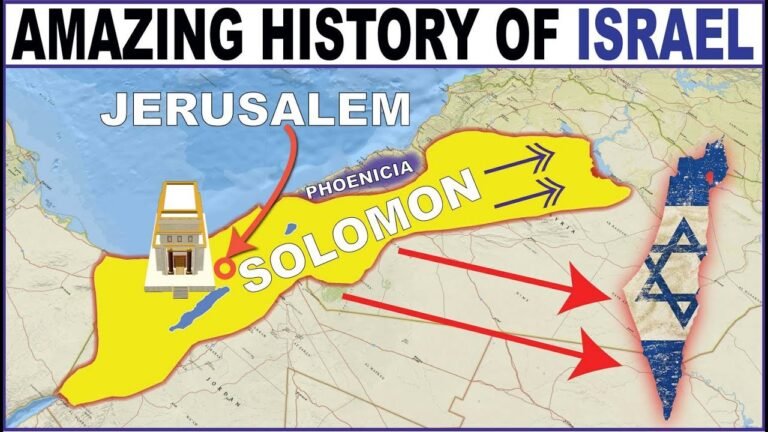Unveiling the Philistines: Insights from the Bible
The term Philistines often evokes images of ancient adversaries in the biblical narrative, but their role in the scriptures goes far beyond mere antagonism. As both a historical and cultural group, the Philistines were complex figures who interacted with the Israelites in ways that shaped the course of biblical events. Exploring their origins, societal structures, and interactions with neighboring cultures offers a deeper understanding of their significance in the Bible, revealing a rich tapestry of conflict, trade, and cohabitation that continues to intrigue scholars and enthusiasts alike.
Who were the Philistines mentioned in the Bible?
The Philistines were a significant group mentioned in the Bible, known for their interactions with the Israelites. Residing primarily in the southern region of Canaan, they occupied areas along the western coast, which corresponds to modern-day Israel. Their presence in the Promised Land marked them as key players in the historical and cultural narratives of the ancient Near East.
As a seafaring people, the Philistines are believed to have originated from the Aegean region, arriving in Canaan around the 12th century BCE. They established five major city-states—Gaza, Ashkelon, Ashdod, Ekron, and Gath—each functioning as an independent political entity. This strategic coastal location allowed them to engage in trade and military endeavors, impacting the dynamics of power in the region.
The biblical accounts often depict the Philistines as adversaries of the Israelites, highlighting conflicts that shaped the history of both groups. Notable stories, such as the encounter between David and Goliath, emphasize the Philistines’ role as formidable opponents. Over time, their influence waned, but their legacy endures in biblical texts, illustrating the complex interplay of cultures in ancient history.
What name is used today for the Philistines?
Today, the term “Palestinian” traces its roots back to the ancient Philistines, a group that once dominated the coastal regions of present-day Israel and Gaza. While the Philistines were not indigenous to Canaan, their influence on the area was significant during their time. This historical connection highlights the complex tapestry of identity and heritage in the region, illustrating how names and cultures evolve over centuries while still holding echoes of their past.
Were the Philistines portrayed negatively in the Bible?
The Philistines are often depicted as the antagonists in biblical narratives, most notably exemplified by the giant Goliath who challenged the young shepherd David. This portrayal has cemented their reputation as adversaries of the Israelites, representing a significant cultural and military threat during their time in the Holy Land. Their arrival in the region around the 12th century B.C. marked the beginning of a tumultuous era filled with confrontations and conflicts.
As a seafaring people, the Philistines brought with them a distinct culture and advanced technology, which set them apart from their neighbors. Their five city-states—Gaza, Ashkelon, Ashdod, Ekron, and Gath—became centers of commerce and power. However, their aggressive expansion and frequent skirmishes with the Israelites painted them as relentless foes in the biblical narrative, overshadowing their contributions to the region’s development.
Despite their negative portrayal in scripture, the Philistines were a complex society with a rich history. Their eventual disappearance from historical records around 600 years later raises questions about the dynamics of ancient civilizations and the ever-shifting landscape of power in the region. While they are often remembered as villains in biblical stories, understanding their role requires a deeper exploration of their cultural impact and historical significance.
Discovering the Ancient Roots of a Notorious People
Throughout history, the enigmatic reputation of certain groups has often overshadowed their rich cultural heritage. Delving into the ancient roots of these communities reveals a tapestry woven with resilience, innovation, and artistry. From intricate pottery and stunning architecture to vibrant oral traditions, the remnants of their past tell stories of survival and adaptation. By exploring these historical foundations, we can begin to appreciate the complexities that shaped their identities and understand the influences that continue to resonate today.
Moreover, uncovering these ancient connections sheds light on the interactions between various civilizations, highlighting the shared human experiences that transcend time and geography. As we piece together the narratives of these notorious peoples, it becomes evident that their legacies are not defined solely by conflict or controversy, but rather by their contributions to the broader tapestry of human history. This journey into the past invites us to engage with their stories, fostering a deeper understanding of the world we inhabit and the diverse cultures that enrich it.
Biblical Perspectives on Philistine Culture and Conflict
The Biblical narrative presents the Philistines as a significant cultural and military force in ancient Israel, often depicted in conflict with the Israelites. Their presence in the coastal regions of Canaan introduced a blend of Aegean and local influences, evident in their advanced metallurgy and distinctive pottery. This cultural richness is juxtaposed with their role as perennial adversaries in the Biblical accounts, notably during the reign of King Saul and the legendary encounter between David and Goliath. These stories highlight not only the physical confrontations but also the broader cultural tensions that shaped the historical landscape of the region.
Religious texts illustrate the Philistines not merely as enemies but as a complex society with its own gods, customs, and societal structures. The worship of deities such as Dagon and Ashtoreth underscores their distinct spiritual beliefs, which often clashed with the monotheistic practices of the Israelites. This cultural dichotomy fueled conflicts that were as much about identity and belief as they were about land and power. The Philistine cities, including Gaza and Ashkelon, served as centers of trade and innovation, emphasizing their role in the ancient Near Eastern economy.
Ultimately, the interactions between the Israelites and the Philistines reveal a dynamic interplay of conflict and cultural exchange. While the Biblical texts often portray the Philistines as the antagonists, their influence on the region’s cultural and technological development cannot be overlooked. This duality invites a deeper exploration of how conflict can shape cultural identities, as both groups navigated their complex relationship through warfare, trade, and cultural assimilation, leaving an indelible mark on the historical narrative of the ancient world.
Unearthing Historical Truths: The Philistines’ Legacy
The Philistines, often portrayed as the antagonists in biblical narratives, have a rich and complex legacy that invites a deeper exploration of their culture and contributions. Recent archaeological discoveries in the coastal regions of Israel and Gaza have revealed sophisticated urban centers, advanced pottery techniques, and evidence of vibrant trade networks that suggest a society far more nuanced than the simplistic depictions of ancient texts. Their interactions with neighboring civilizations, including the Israelites, reflect a dynamic exchange of ideas and practices, challenging long-held stereotypes. As scholars continue to unearth artifacts and reexamine historical narratives, the Philistines emerge not merely as foes, but as a significant and influential culture that shaped the ancient world.
From Adversaries to Allies: Understanding Philistine Influence
The ancient Philistines, often portrayed as adversaries of the Israelites in biblical narratives, played a more complex role in the cultural and economic landscape of the region than traditionally understood. Their interactions with neighboring societies reveal a dynamic exchange of ideas and practices, illustrating how conflict can lead to unexpected alliances. The Philistines contributed significantly to advancements in technology and agriculture, introducing new techniques that transformed local economies and fostered collaboration among various groups.
As trade routes expanded, the Philistines became pivotal in facilitating cultural exchange, blending their customs with those of the Israelites and other neighboring peoples. This fusion not only enriched the local culture but also promoted a sense of shared identity amid ongoing tensions. By examining the Philistine influence through this lens, we can appreciate how historical adversaries can shape alliances and mutual understanding, ultimately paving the way for progress and innovation in ancient societies.
The Philistines, often portrayed as the antagonists of biblical narratives, offer a complex glimpse into the cultural and historical dynamics of ancient Israel. Their influence and interactions with the Israelites reveal not only conflicts but also a rich tapestry of trade, innovation, and adaptation. Understanding the Philistines sheds light on the broader narrative of the Bible, reminding us that history is rarely black and white, and that the stories we inherit are woven from the threads of many perspectives.







